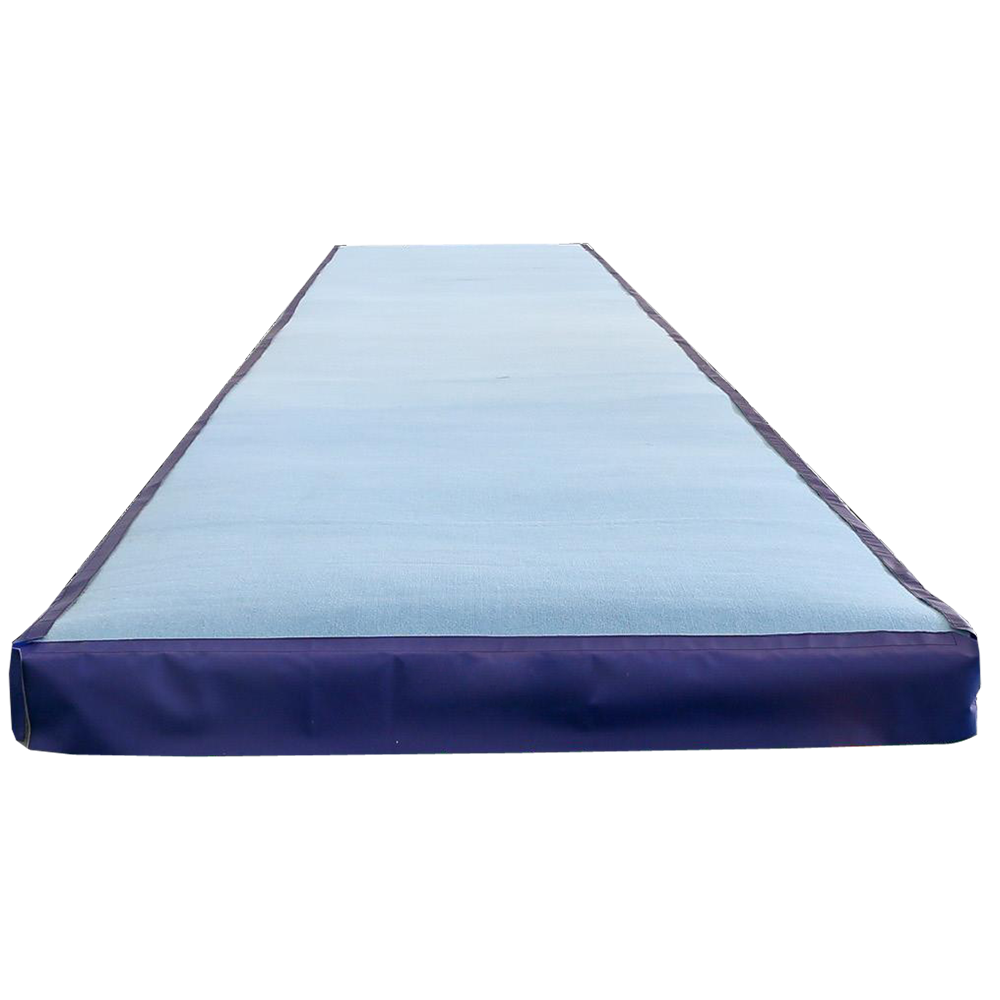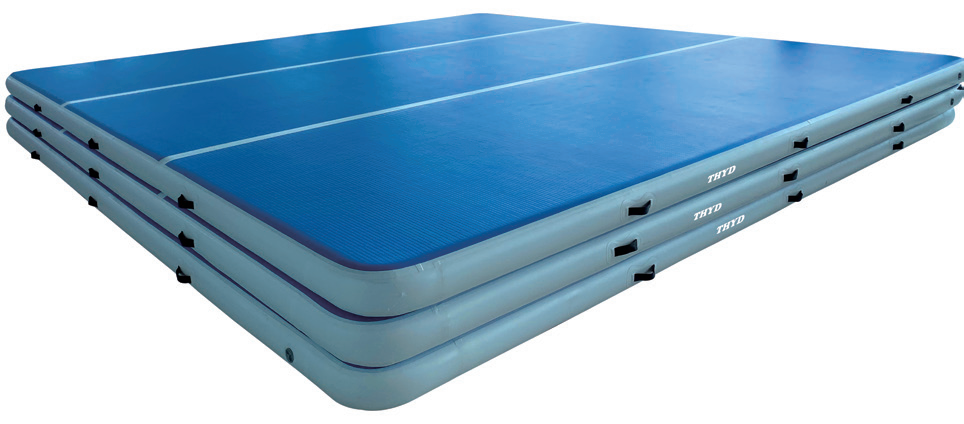Tumble Track vs. Traditional Trampolines: Which is Better for Your Routine?
Whether you’re a gymnast, cheerleader, parkour enthusiast, or simply someone looking for a fun way to improve fitness, the debate between using a Tumble Track and a traditional trampoline is worth exploring. Both offer opportunities to practice skills, improve strength, and have fun, but they are fundamentally different in design, purpose, and benefits.
In this article, we’ll break down what each option offers, compare them across critical factors such as performance, safety, training benefits, and versatility, and help you decide which is the better choice for your needs.
What is a Tumble Track?
A Tumble Track is a long, narrow piece of equipment designed for practicing tumbling skills. It resembles a trampoline in that it has a springy surface, but it is usually rectangular and much longer than it is wide.
There are two primary types of Tumble Tracks:
Spring-based Tumble Track: Uses springs to provide bounce, similar to a traditional trampoline but with a flatter, more controlled rebound.
Air track (inflatable): Uses air pressure to create a bouncy but stable surface, offering portability and adjustability in firmness.
Tumble Tracks are particularly popular among gymnasts, cheerleaders, martial artists, and stunt performers because they allow for repeated skill practice with reduced impact on joints.
What is a Traditional Trampoline?
A traditional trampoline typically has a square, rectangular, or round shape and is designed for vertical jumping. Its large, bouncy surface is supported by springs or bungee cords, and it is often used for recreational bouncing, aerial tricks, and fitness workouts.
Trampolines come in a variety of styles:
Backyard trampolines: For casual recreational use, often with safety nets.
Gymnastics trampolines: Higher-performance models for advanced skills.
Mini trampolines (rebounders): Used mainly for low-impact cardio exercise.
Performance Differences
The main difference between a Tumble Track and a traditional trampoline lies in their bounce characteristics and intended movements.
Tumble Track: Offers a more controlled and directional bounce, allowing athletes to move horizontally while practicing skills. This is ideal for passes involving flips, handsprings, and aerial moves where forward momentum is important.
Traditional Trampoline: Provides vertical bounce, allowing the user to jump higher and perform spins, flips, or other aerial skills in place.
Because of these differences, the Tumble Track is better suited to replicating floor routines and cheer passes, while trampolines are better for aerial tricks and sustained jumping.

Safety Considerations
Safety is always a top priority when choosing sports equipment.
Tumble Track: Generally safer for repetitive tumbling practice because the surface is narrower and encourages controlled movement in one direction. The bounce is less extreme than a traditional trampoline, reducing the risk of losing balance mid-air.
Traditional Trampoline: Higher bounce potential means a greater risk of injury from falls, flips gone wrong, or collisions when multiple people are jumping. Safety nets and supervision can reduce but not eliminate these risks.
For athletes refining skills, the Tumble Track often offers a safer progression tool, while trampolines require more awareness and protective measures.
Training Benefits
Skill Development
Tumble Track: Ideal for refining gymnastics, cheerleading, or parkour routines that involve a sequence of connected moves. It allows you to focus on technique without worrying about extreme height or unpredictable rebounds.
Traditional Trampoline: Excellent for aerial awareness, flips, twists, and general coordination. The higher bounce can help athletes get comfortable with more complex aerial maneuvers.
Strength and Conditioning
Tumble Track: Great for lower-body strength, endurance, and plyometric training. It simulates floor tumbling but with less joint strain.
Traditional Trampoline: Engages the full body, offering a great cardio workout and improving balance.
Injury Prevention
Tumble Track: Lower impact makes it a better option for athletes recovering from injuries or wanting to reduce stress on the knees, ankles, and hips.
Traditional Trampoline: While good for conditioning, the higher forces involved mean athletes need proper technique to avoid injury.
Versatility
When it comes to versatility, the Tumble Track and trampoline serve different needs:
Tumble Track: Works for skill practice, conditioning drills, and warm-ups. Inflatable versions can be used indoors or outdoors and are easy to store.
Traditional Trampoline: Offers recreational fun for multiple users, fitness workouts, and skill practice, but is less portable and requires more space.
Space and Portability
A traditional trampoline usually requires a dedicated space, whether indoors for professional models or outdoors for recreational ones. It’s not easy to move once set up.
A Tumble Track, especially an inflatable air track, can be deflated, rolled up, and stored, making it a great option for small spaces or multi-use areas.
Cost Comparison
Tumble Track: Prices vary depending on length, material, and whether it’s spring-based or inflatable. Inflatable models are generally more affordable and portable, while professional spring models cost more but offer consistent rebound.
Traditional Trampoline: Recreational backyard trampolines are relatively affordable, but professional gymnastics trampolines are much more expensive and require specialized installation.
Who Should Choose a Tumble Track?
You might prefer a Tumble Track if you:
Are a gymnast, cheerleader, or martial artist.
Need to practice floor passes or connected moves.
Want lower-impact training that’s easier on the joints.
Require portable equipment that’s easy to store.
Who Should Choose a Traditional Trampoline?
A traditional trampoline may be better if you:
Enjoy recreational jumping with friends or family.
Want to focus on aerial tricks and vertical skills.
Have the space and budget for a permanent installation.
Combining Both for Complete Training
Some athletes and coaches use both a Tumble Track and a traditional trampoline in their routines. The Tumble Track is used for controlled skill repetition and horizontal movement, while the trampoline is used for aerial awareness and vertical bounce.
This combination can provide a well-rounded approach to skill development, conditioning, and variety in training sessions.
Conclusion
The choice between a Tumble Track and a traditional trampoline comes down to your goals, available space, and safety considerations. The Tumble Track excels in skill-focused, directional training with lower impact, making it a top choice for gymnasts, cheerleaders, and other athletes who need precision and repetition. A traditional trampoline offers higher bounce, more recreational versatility, and a fun way to build aerial awareness, but it carries greater injury risk if not used carefully.
For athletes and fitness enthusiasts looking for structured, skill-based training, the Tumble Track is often the better investment. For those seeking all-around fun and aerial thrills, a traditional trampoline remains a classic option.
FAQ
Can beginners use a Tumble Track?
Yes. Tumble Tracks are excellent for beginners because they provide controlled bounce and help build confidence before moving to harder surfaces.
Are inflatable Tumble Tracks durable?
High-quality inflatable Tumble Tracks made from reinforced PVC are highly durable and can last for years with proper care.
Is a Tumble Track safer than a trampoline?
Generally, yes. The controlled bounce and directional movement reduce the risk of falls and collisions.
Can you do flips on a Tumble Track?
Absolutely, but the bounce is lower, so flips are usually part of a tumbling pass rather than high aerial tricks.
Do Tumble Tracks require maintenance?
Minimal maintenance is needed. Keep the surface clean, inspect for wear, and for inflatable models, ensure they are properly inflated and stored.
Table of Contents
- Tumble Track vs. Traditional Trampolines: Which is Better for Your Routine?
- What is a Tumble Track?
- What is a Traditional Trampoline?
- Performance Differences
- Safety Considerations
- Training Benefits
- Versatility
- Space and Portability
- Cost Comparison
- Who Should Choose a Tumble Track?
- Who Should Choose a Traditional Trampoline?
- Combining Both for Complete Training
- Conclusion
- FAQ


